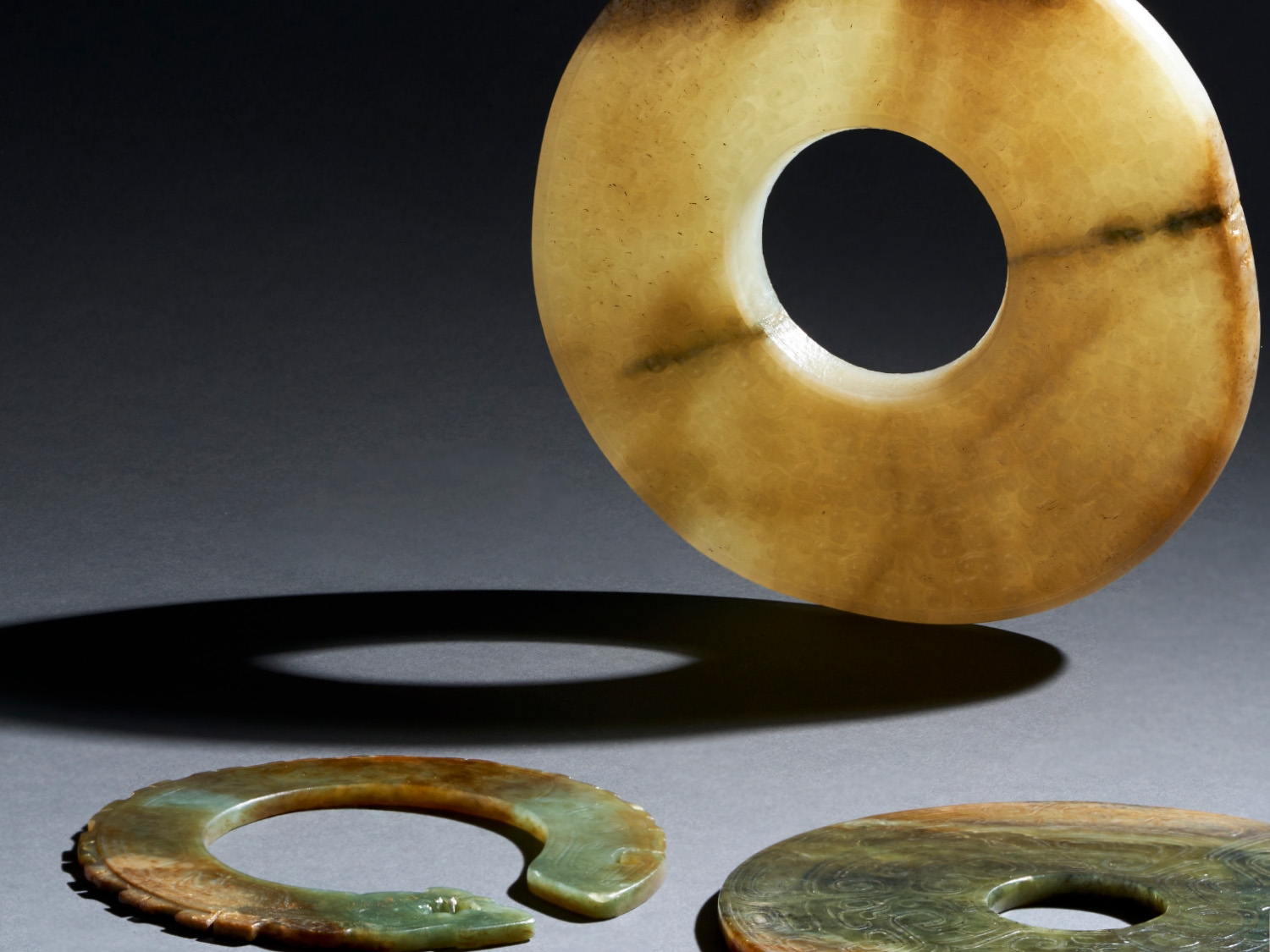Jade (玉, yù) has been revered in Chinese civilization for millennia. The earliest authoritative definition appears in the Shuõwén Jiêzì (《說文解字》), compiled by Xu Shen during the Eastern Han dynasty (circa 100 CE). Xu defines jade as: “玉,石之美者。” (Yù, shí zhī měi zhě.) “Jade is the most beautiful of stones.”
This definition highlights jade’s aesthetic excellence and cultural prestige. The ancient character for 玉 depicts three pieces of jade strung together, reflecting its role as ornament and ritual implement. From the earliest records, jade was linked to propriety, status, and moral virtue.
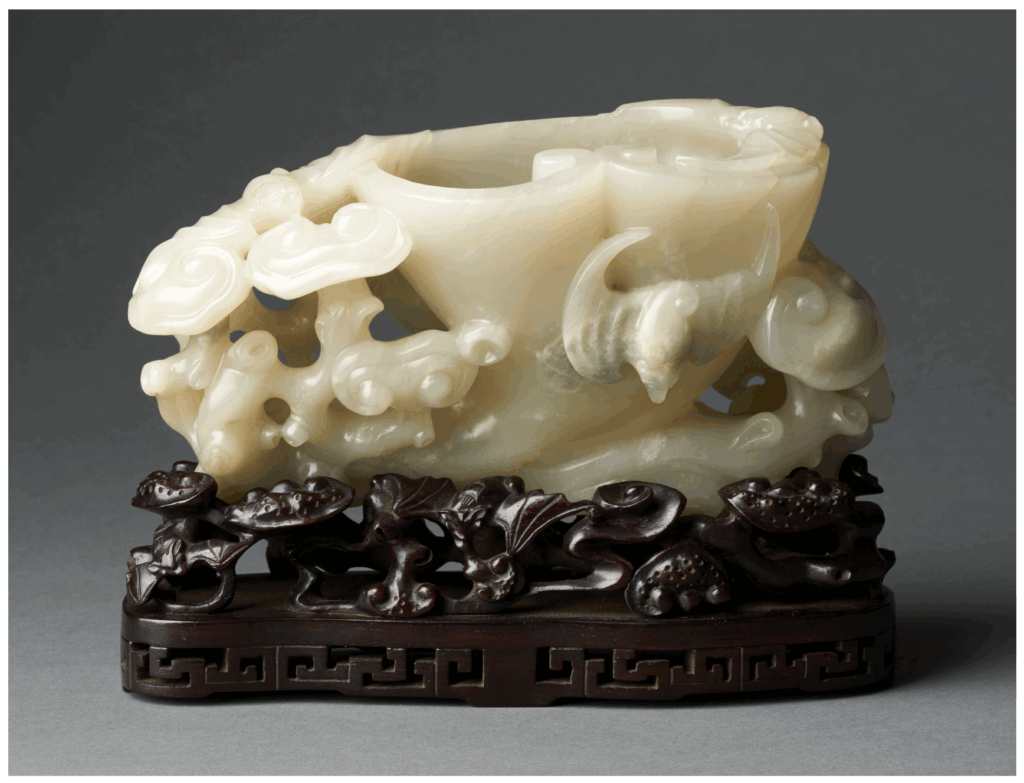
Prehistoric to Early Dynastic: Belief and Ritual Origins
Jade use in China extends back over 8,000 years. In the Hongshan culture, jade dragons and huang pendants served as ritual symbols of leadership. The Liangzhu culture (~3300–2300 BCE) produced bi discs and cong tubes intricately carved with deity-animal masks, mediating between humans and the divine. During the Shang and Zhou dynasties, jade entered a formal ritual system—the “Six Ritual Jades” (liù ruì): bi, gui, cong, zhang, hu, and huang—each with defined ceremonial functions and political symbolism.
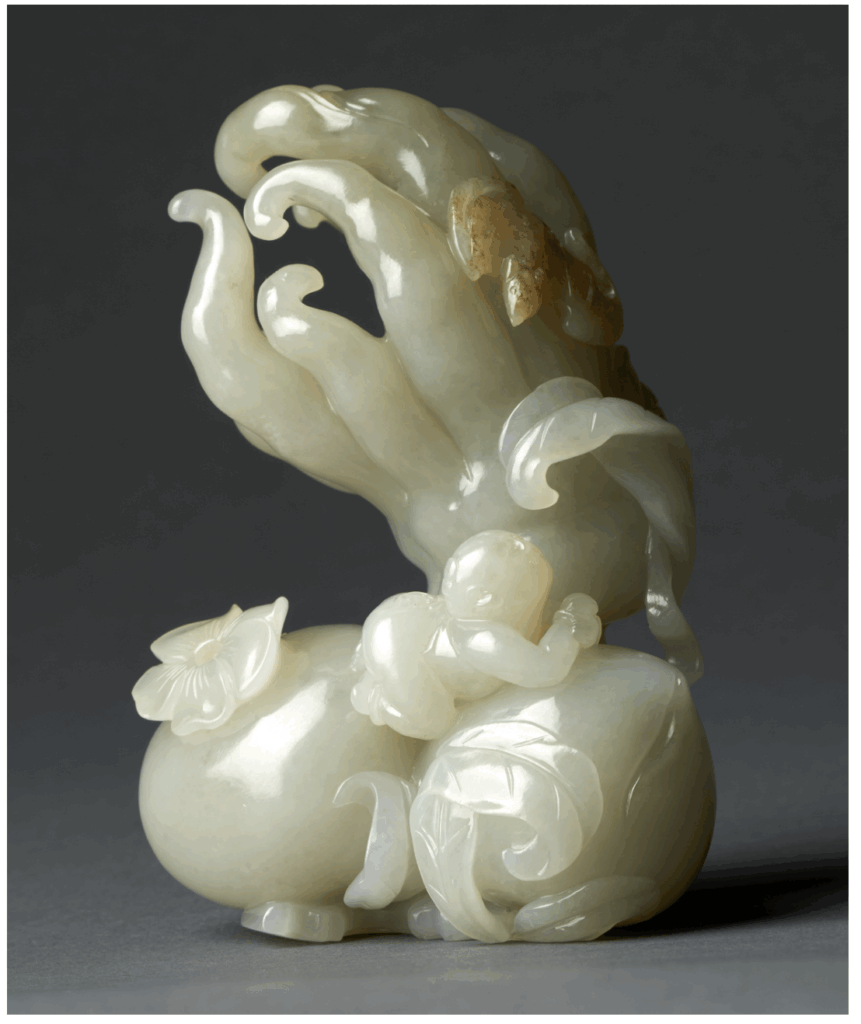
Spring and Autumn to Qin–Han: Moral and Imperial Symbolism
By the Spring and Autumn period, the ideal that “a gentleman compares his virtue to jade” became widespread. Jade’s luster, resilience, and purity served as metaphors for benevolence, righteousness, wisdom, courage, and integrity. Pendants signified scholarly status, uniting adornment with moral philosophy. In the Qin and Han eras, jade’s role expanded to funerary and immortality rites—lavish jade burial suits and ceremonial pieces reflected beliefs in jade’s protective and life-extending powers.
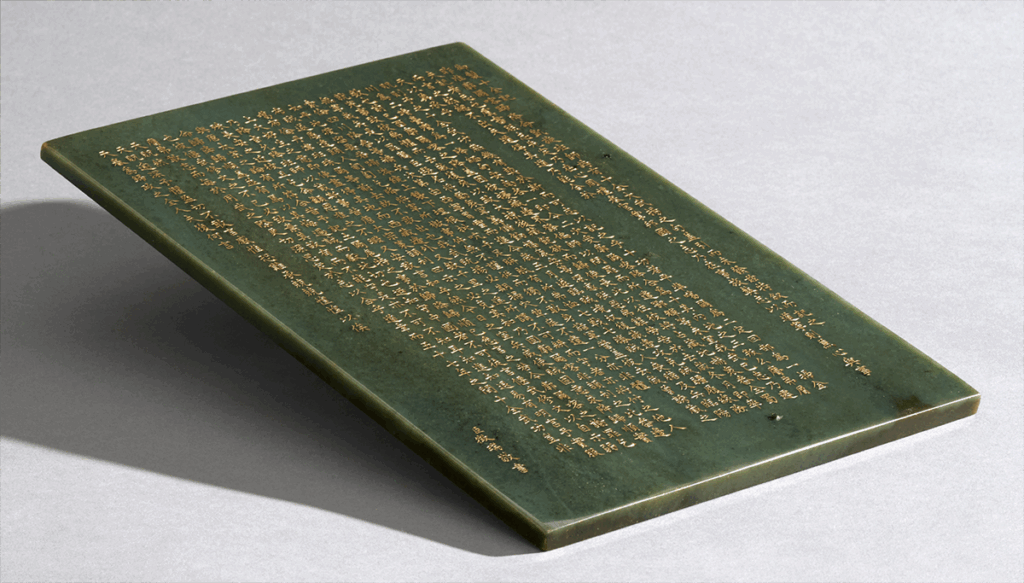
Wei–Jin to Tang: Secularization and Religious Integration
From the Wei–Jin through the Tang dynasty, jade shifted from ritual exclusivity to integration into daily and religious life. Belt plaques, vessels, and Buddhist figures became common. The Tang’s cosmopolitan prosperity encouraged artistic innovation, producing jade works of remarkable diversity and refinement.
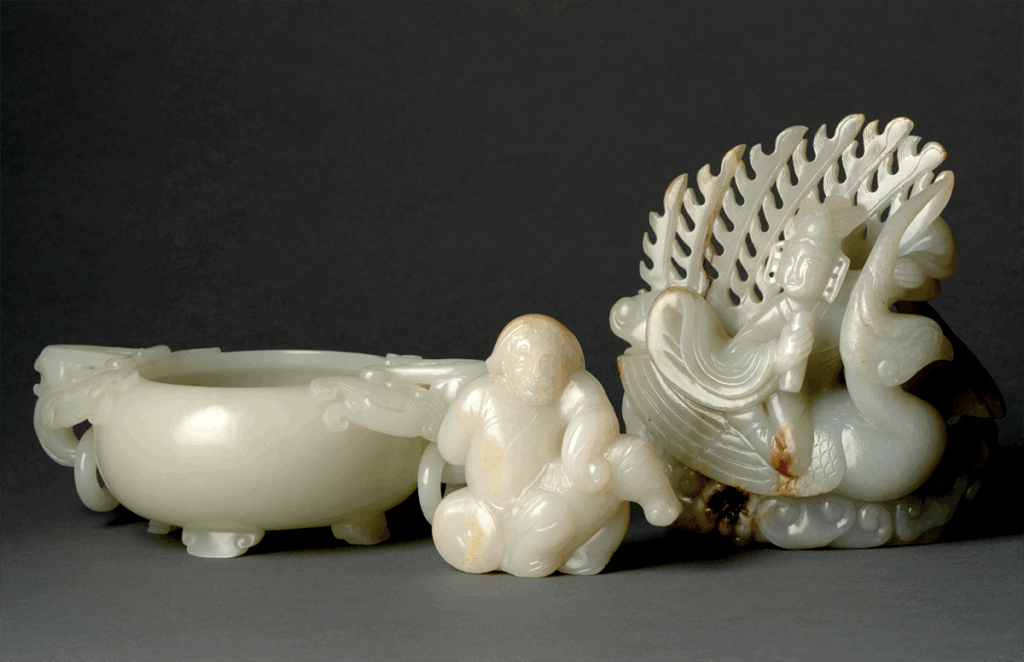
A very rare and fine Chinese white jade carving of a foreigner riding a horse, Ming Dynasty (1368-1644) or earlier. $5,000-7,000
A rare and large Chinese pale white jade carving
of Magu riding a pheonix,
Jin/Ming Dynasty,
13th/15th century. $5,000-8,000
Song to Qing: Literati Taste and Imperial Mastery
Song literati favoured refined scholar’s objects—seals, brush rests, and miniature carvings—valuing subtle form over ostentation. The Yuan introduced nomadic motifs, while the Ming and Qing saw the zenith of jade craftsmanship, especially with Hetian jade. Imperial workshops employed openwork, relief carving, and monumental forms to express political authority and cultural sophistication.
A Collector’s Journey: Thomas W.Y. Kwok
This 2nd of November, our Fine Chinese and Asian Art Auction presents 14 jade pieces from the estate of Hong Kong collector Thomas W.Y. Kwok. Born in Macau, Kwok studied architecture in Melbourne and built a four-decade career with Wong & Ouyang, shaping Hong Kong’s skyline. His collecting began with Japanese occupation stamps (1941–1945), issued during Japan’s wartime administration of Hong Kong and other territories. Gradually, his passion shifted to jade, inspired by visits to auction houses.
At the time, Hong Kong’s auction scene was emerging—Sotheby’s debuted in 1973, Christie’s in 1986. By the late 1980s, Kwok was attending smaller sales, joining the city’s first generation of serious collectors. His jade holdings embody not only technical excellence and cultural symbolism but also the personal evolution of a connoisseur whose interests bridged philately, architecture, and Chinese art heritage.
The Fine Chinese & Asian Art auction will take place on Sunday 2 November 2025 in Melbourne. For viewing times and to see the full catalogue please visit our website.
By Luke Guan, Head of Asian Art
Top Image (left to right): A rare and large Chinese jade dragon formed pendant, Shang Dynasty (1600-1650 BC).$10,000-20,000
A rare and fine Chinese white jade “Dragon” disc bi, late spring autumn period – early Warring States period, circa 570 – 400 BC. $8,000-12,000
A Chinese celadon jade “Dragon” disc, bi, mid-western Zhou Dynasty, circa mid-10th-mid-9th-century BC. $6,000-8,000
October 2025
